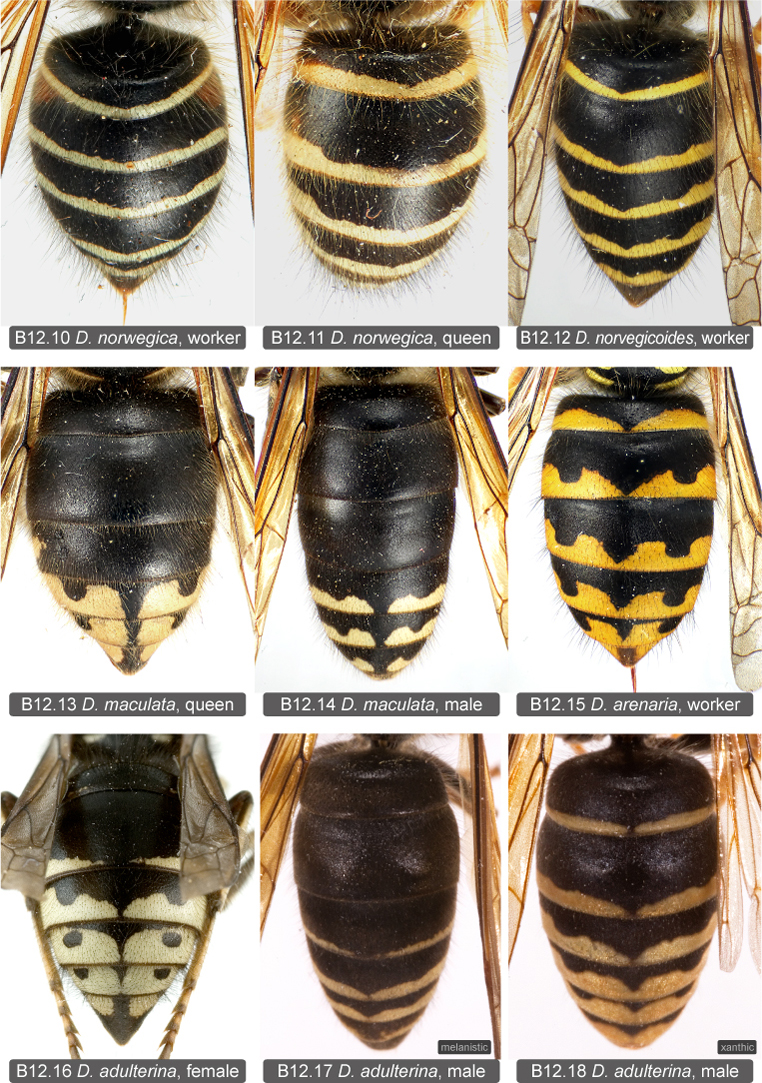 src
mirror
src
mirror
Bald-faced Hornet (Dolichovespula maculata) - Bald-faced Hornets are predators and they attack only live prey. They are mostly predators of spiders, harvestmen, hemipterans, spittle bugs, house flies, sawflies larvae, caterpillars, beetles, other yellowjackets species and grasshoppers. The adults carry their prey or part of them to the nest to feed their larval states. They sometimes feed of flower nectar or sweet substances (Akre et al. 1981, VanDyk 2003). src
(5) Notes On Yellow jackets As A Food Source For The Bald Faced Hornet Vespula maculataJ O Howell
Entomological News 84: 141-142 (1973)
src
page 141: http://biostor.org/cache/20571/entomologicalnew84amer_0165.jpg mirror
page 142: http://biostor.org/cache/20571/entomologicalnew84amer_0166.jpg mirror
(6) Is this a Bald-faced Hornet?
Calgary/Weaselhead flats, Alberta, Canada
May 15, 2008
http://bugguide.net/node/view/183807/bgpage
No - but a MUCH better finding!
For this is actually a queen
of the Arctic (aerial) Yellowjacket, Dolichovespula norwegica albida. This is
the first live specimen in BG, for we had only a dry pinned worker provided by
Dr Buck until now. Most reproductive females lack lateral red spots on T2.Thank
your for sharing this pic! I ignored this subspecies of Old-World D. norwegica
occured as far South as Calgary, but the Rockies have something to do with that.
By the way, current name of the Bald-faced Hornet is Dolichovespula maculata.
Q: I thought that Yellowjackets are black/yellow?
Four North-American Yellowjackets (and,for that matter,
several Eastern Asian ones, especcially in Japan), have white or whitish,
instead of yellow, color patterns.
Interestingly, the Western Palaearctic counterparts of V. rufa intermedia, D.
norwegica albida and D. adulterina arctica have yellow patterns.
(7) "I thought this was the same species (Bald faced hornet) that I had posted a few days ago. Today I noticed that it has an extra white band and wondered if this was something a little different. ID and any info would be appreciated. Thanks" src
(8) Oak Sap : I guess you took this picture at the same place as the European Hornet V. crabro? It shows that both species have very similar feeding habits, being very fond of tree sap - what kind of tree, by the way: maybe an Oak (Quercus)?. Although being phylogenically an aerial Yellowjacket, the Bald faced Hornet is very close, ecologically speaking, to true Hornets. bugguide.net (Bald-faced Hornet worker)
But Yellowjacket workers kill prey by biting, not stinging.
(11) Bald-faced Hornet x Brooklyn Botanic Garden x nest - "They typically nest high in trees, or large shrubs like the Lilac above [at Brooklyn Botanic Garden]. Sheltered by summer foliage, and camouflaged the color the bark, they're difficult to spot."